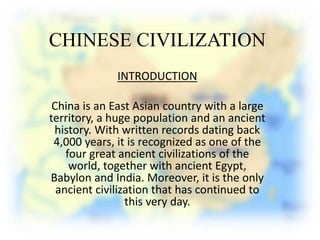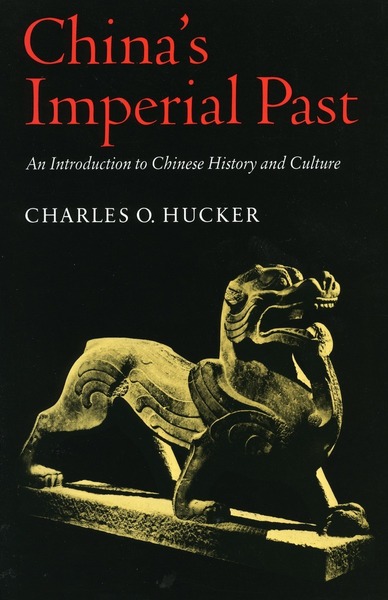Introduction And History of China: A Journey Through Time

China is one of the oldest civilizations in the world. It has a rich and diverse history that spans thousands of years. From ancient dynasties to modern times, China has made significant contributions to the world.
Geographical Overview
China is located in East Asia. It is the world’s fourth largest country by area. It shares borders with 14 countries including India, Russia, and Vietnam. The capital city of China is Beijing.
Ancient China
Ancient China dates back to over 4,000 years ago. The Yellow River and Yangtze River were the cradles of Chinese civilization. Early Chinese people settled along these rivers and developed agriculture.
The Xia Dynasty (2070-1600 Bc)
The Xia Dynasty is the first dynasty in Chinese history. It was founded by Yu the Great. He is famous for controlling floods and establishing a stable government.
The Shang Dynasty (1600-1046 Bc)
The Shang Dynasty followed the Xia Dynasty. It is known for its advances in bronze work, writing, and urban development. The capital was located in Yin, near modern-day Anyang.
The Zhou Dynasty (1046-256 Bc)
The Zhou Dynasty came after the Shang Dynasty. It is the longest-lasting dynasty in Chinese history. The period is divided into the Western Zhou and Eastern Zhou.
- Western Zhou (1046-771 BC): This period is marked by stability and prosperity.
- Eastern Zhou (770-256 BC): This period saw the rise of many small states and frequent wars.
Imperial China
Imperial China began with the Qin Dynasty. This era saw the unification of China and the establishment of a centralized government.
The Qin Dynasty (221-206 Bc)
The Qin Dynasty was founded by Qin Shi Huang. He is known for unifying China and building the Great Wall. The Qin Dynasty introduced standardized measurements, currency, and writing systems.
The Han Dynasty (206 Bc – 220 Ad)
The Han Dynasty followed the Qin Dynasty. It is one of the greatest dynasties in Chinese history. The Silk Road trade route was established during this time. The capital was Chang’an, now known as Xi’an.
The Tang Dynasty (618-907 Ad)
The Tang Dynasty is considered a golden age in Chinese history. It is known for its poetry, painting, and cultural achievements. The capital city, Chang’an, was the largest city in the world at that time.
The Song Dynasty (960-1279 Ad)
The Song Dynasty is known for its advances in technology and economy. It saw the invention of gunpowder, the compass, and printing. The capital cities were Bianjing and Lin’an.

Credit: www.amazon.com
Mongol Rule and the Yuan Dynasty
The Mongols conquered China in the 13th century. They established the Yuan Dynasty, which lasted from 1271 to 1368.
The Yuan Dynasty (1271-1368)
The Yuan Dynasty was founded by Kublai Khan. It is known for its vast empire and cultural exchanges. The capital was Dadu, now Beijing.
The Ming and Qing Dynasties
After the fall of the Yuan Dynasty, the Ming and Qing Dynasties ruled China. These periods saw significant developments in arts, literature, and architecture.
The Ming Dynasty (1368-1644)
The Ming Dynasty is known for its strong navy and exploration. The famous explorer Zheng He made several voyages during this time. The capital was Beijing, where the Forbidden City was built.
The Qing Dynasty (1644-1912)
The Qing Dynasty was the last imperial dynasty in China. It was founded by the Manchu people. The dynasty saw the expansion of China’s territory and population growth.
Modern China
The fall of the Qing Dynasty marked the end of imperial China. The Republic of China was established in 1912. However, the country faced internal conflicts and foreign invasions.
Republic Of China (1912-1949)
The Republic of China was founded by Sun Yat-sen. It aimed to modernize the country and establish democracy. However, it faced many challenges including warlords and Japanese invasion.
People’s Republic Of China (1949-present)
The People’s Republic of China was established in 1949 by Mao Zedong. It marked the beginning of communist rule in China. The country has since undergone significant economic reforms and development.

Credit: www.sup.org
Key Historical Events
Several key events have shaped China’s history. Here are some of the most important ones:
| Event | Year | Description |
|---|---|---|
| First Opium War | 1839-1842 | Conflict between China and Britain over trade and opium. |
| Taiping Rebellion | 1850-1864 | Massive civil war led by Hong Xiuquan against the Qing Dynasty. |
| Boxer Rebellion | 1899-1901 | Anti-foreign, anti-colonial uprising in China. |
| Chinese Civil War | 1945-1949 | Conflict between the Nationalists and Communists. |
| Great Leap Forward | 1958-1962 | Economic and social campaign led by the Communist Party. |
| Cultural Revolution | 1966-1976 | Political movement to enforce communism by removing capitalist elements. |
Frequently Asked Questions
What Is China’s Ancient Name?
China’s ancient name is “Zhōngguó,” meaning “Middle Kingdom. “
Who Founded Ancient China?
Emperor Qin Shi Huang founded ancient China.
How Old Is Chinese Civilization?
Chinese civilization is over 5,000 years old.
When Did The Great Wall Construction Start?
The Great Wall’s construction began in the 7th century BC.
Conclusion
China’s history is rich and complex. From ancient dynasties to modern reforms, China has evolved significantly. Understanding its history helps us appreciate its culture and contributions to the world.
Explore more about China and its fascinating journey through time!




